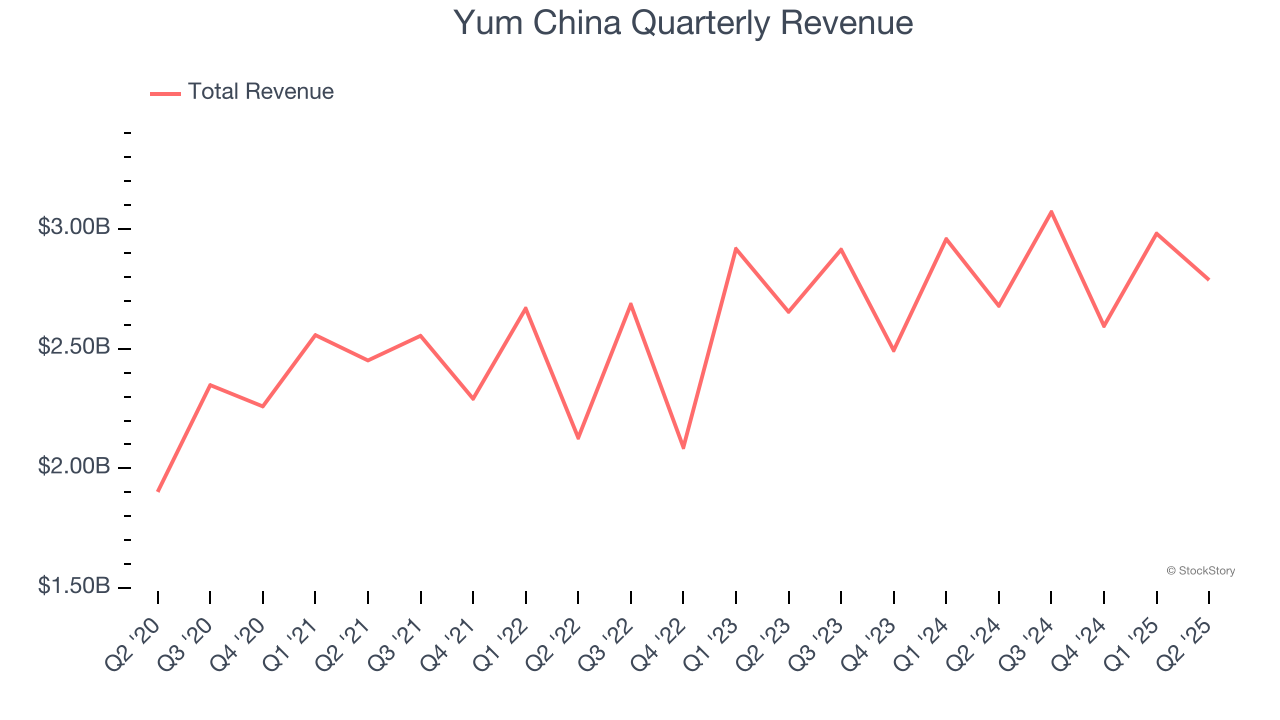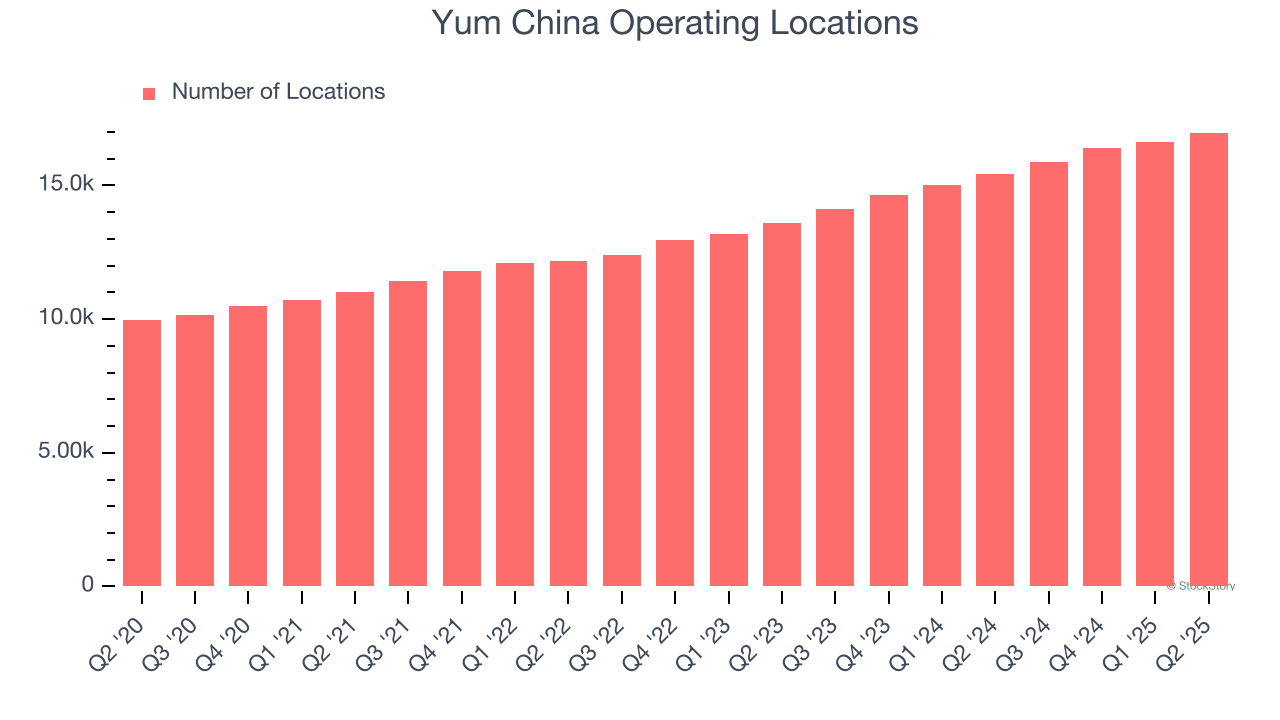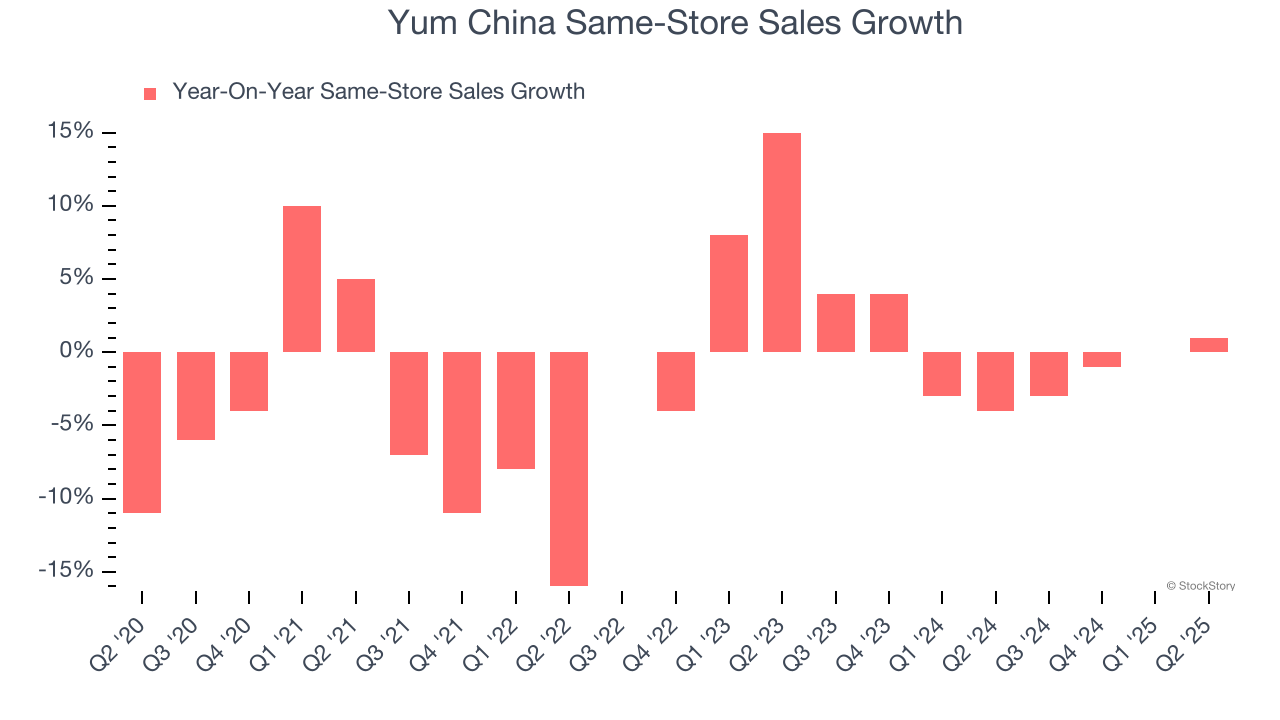
Fast-food company Yum China (NYSE: YUMC) missed Wall Street’s revenue expectations in Q2 CY2025 as sales rose 4% year on year to $2.79 billion. Its non-GAAP profit of $0.58 per share was in line with analysts’ consensus estimates.
Is now the time to buy Yum China? Find out by accessing our full research report, it’s free.
Yum China (YUMC) Q2 CY2025 Highlights:
- Revenue: $2.79 billion vs analyst estimates of $2.80 billion (4% year-on-year growth, 0.5% miss)
- Adjusted EPS: $0.58 vs analyst estimates of $0.58 (in line)
- Adjusted EBITDA: $427 million vs analyst estimates of $421 million (15.3% margin, 1.4% beat)
- Operating Margin: 10.9%, in line with the same quarter last year
- Free Cash Flow Margin: 10.4%, up from 8.7% in the same quarter last year
- Locations: 16,978 at quarter end, up from 15,423 in the same quarter last year
- Same-Store Sales rose 1% year on year (-4% in the same quarter last year)
- Market Capitalization: $17.09 billion
Total system sales grew 4% year over year ("YoY"), excluding foreign currency translation ("F/X").
Company Overview
One of China’s largest restaurant companies, Yum China (NYSE: YUMC) is an independent entity spun off from Yum! Brands in 2016.
Revenue Growth
Examining a company’s long-term performance can provide clues about its quality. Any business can experience short-term success, but top-performing ones enjoy sustained growth for years.
With $11.43 billion in revenue over the past 12 months, Yum China is one of the most widely recognized restaurant chains and benefits from customer loyalty, a luxury many don’t have. Its scale also gives it negotiating leverage with suppliers, enabling it to source its ingredients at a lower cost. However, its scale is a double-edged sword because there is only so much real estate to build restaurants, placing a ceiling on its growth. For Yum China to boost its sales, it likely needs to adjust its prices, launch new chains, or lean into foreign markets.
As you can see below, Yum China’s sales grew at a sluggish 5% compounded annual growth rate over the last six years (we compare to 2019 to normalize for COVID-19 impacts).

This quarter, Yum China’s revenue grew by 4% year on year to $2.79 billion, falling short of Wall Street’s estimates.
Looking ahead, sell-side analysts expect revenue to grow 5.8% over the next 12 months, similar to its six-year rate. This projection is underwhelming and implies its newer menu offerings will not accelerate its top-line performance yet.
Unless you’ve been living under a rock, it should be obvious by now that generative AI is going to have a huge impact on how large corporations do business. While Nvidia and AMD are trading close to all-time highs, we prefer a lesser-known (but still profitable) stock benefiting from the rise of AI. Click here to access our free report one of our favorites growth stories.
Restaurant Performance
Number of Restaurants
A restaurant chain’s total number of dining locations influences how much it can sell and how quickly revenue can grow.
Yum China operated 16,978 locations in the latest quarter. It has opened new restaurants at a rapid clip over the last two years, averaging 12.4% annual growth, much faster than the broader restaurant sector.
When a chain opens new restaurants, it usually means it’s investing for growth because there’s healthy demand for its meals and there are markets where its concepts have few or no locations.

Same-Store Sales
The change in a company's restaurant base only tells one side of the story. The other is the performance of its existing locations, which informs management teams whether they should expand or downsize their physical footprints. Same-store sales gives us insight into this topic because it measures organic growth at restaurants open for at least a year.
Yum China’s demand within its existing dining locations has barely increased over the last two years as its same-store sales were flat. Yum China should consider improving its foot traffic and efficiency before expanding its restaurant base.

In the latest quarter, Yum China’s same-store sales rose 1% year on year. This growth was a well-appreciated turnaround from its historical levels, showing the business is regaining momentum.
Key Takeaways from Yum China’s Q2 Results
It was good to see Yum China narrowly top analysts’ same-store sales expectations this quarter. We were also happy its EBITDA narrowly outperformed Wall Street’s estimates. On the other hand, its revenue slightly missed. Zooming out, we think this was a mixed quarter. The stock traded up 2.2% to $47.50 immediately following the results.
So should you invest in Yum China right now? The latest quarter does matter, but not nearly as much as longer-term fundamentals and valuation, when deciding if the stock is a buy. We cover that in our actionable full research report which you can read here, it’s free.




